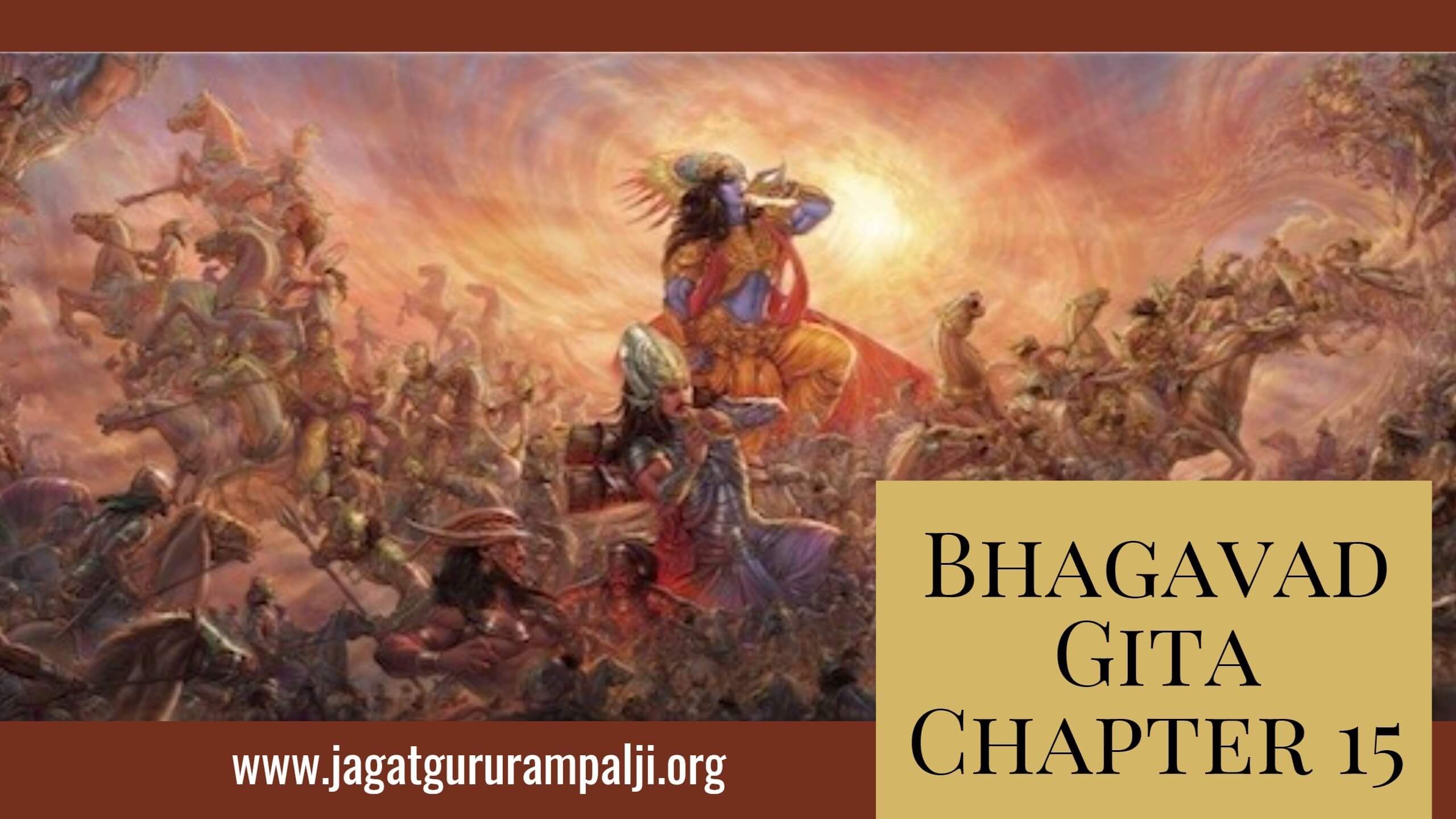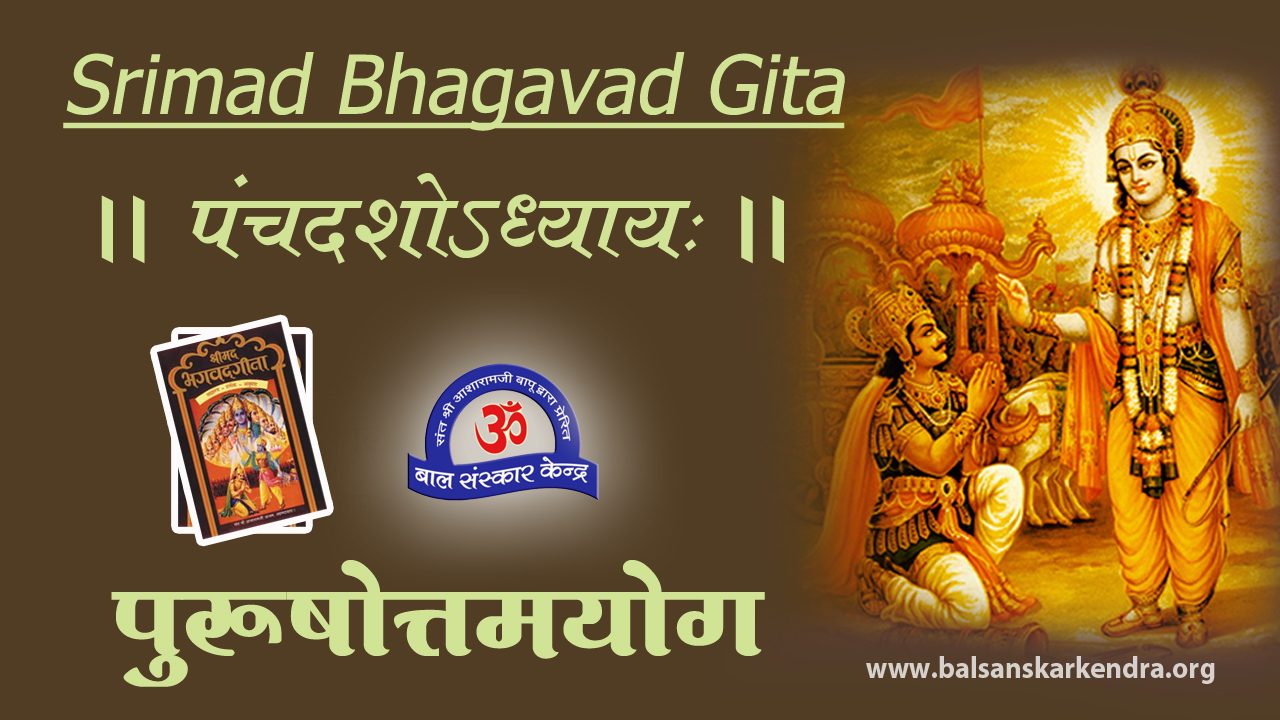15 chapter bhagavad gita – The 15 chapters of the Bhagavad Gita, an ancient Indian scripture, embark on an extraordinary journey that delves into the profound depths of philosophical teachings, the divine guidance of Krishna, and the intricate tapestry of symbolism and metaphors. This sacred text invites us to explore the paths to spiritual enlightenment, navigate ethical dilemmas, and gain a deeper understanding of reality and the human condition.
Within its verses, the Bhagavad Gita unveils the key philosophical concepts that shape our understanding of existence, including the nature of the self, the cycle of rebirth, and the ultimate goal of liberation. It presents different paths to spiritual enlightenment, such as the path of knowledge, the path of devotion, and the path of selfless action, each leading to the realization of the divine within.
Philosophical Teachings

The Bhagavad Gita is a profound philosophical text that explores the nature of reality, the meaning of life, and the path to spiritual enlightenment. It presents a comprehensive system of thought that encompasses metaphysics, ethics, and spirituality, offering profound insights into the human condition and the nature of the universe.
The Bhagavad Gita, an ancient Indian scripture, comprises 15 chapters filled with profound wisdom. Just as the little book bourbon chapter 7 delves into the complexities of human nature, the 15 chapters of the Bhagavad Gita offer insights into the nature of reality, the path to enlightenment, and the ultimate goal of liberation.
The text serves as a guide for spiritual seekers, providing a comprehensive framework for understanding the world and our place within it.
The Gita’s teachings are based on the ancient Indian philosophy of Vedanta, which emphasizes the unity of all existence and the importance of self-realization. The text presents a variety of philosophical concepts, including the nature of the soul, the illusion of Maya, the law of karma, and the path of yoga.
Different Paths to Spiritual Enlightenment, 15 chapter bhagavad gita
The Gita describes three main paths to spiritual enlightenment: the path of action (karma yoga), the path of knowledge (jnana yoga), and the path of devotion (bhakti yoga). Each path is suited to different temperaments and personalities, and the Gita emphasizes that all paths lead to the same ultimate goal of self-realization.
- Karma yoga is the path of action, which involves performing one’s duties without attachment to the fruits of labor. By acting selflessly, one can purify the mind and develop spiritual qualities such as compassion, humility, and equanimity.
- Jnana yoga is the path of knowledge, which involves studying the sacred texts and contemplating the nature of reality. By gaining knowledge of the self and the universe, one can dispel ignorance and attain enlightenment.
- Bhakti yoga is the path of devotion, which involves surrendering oneself to God or a higher power. By practicing devotion, one can develop a deep and personal relationship with the divine and experience the bliss of divine love.
Ethical Dilemmas and Moral Teachings
The Gita also addresses a number of ethical dilemmas and moral teachings, providing guidance on how to live a virtuous and meaningful life. The text emphasizes the importance of non-violence, truthfulness, compassion, and justice.
The 15 chapters of the Bhagavad Gita, an ancient Indian scripture, offer profound insights into the nature of reality, the path to liberation, and the importance of self-realization. Like the intense battle depicted in the blue lock manga chapter 219 , the Bhagavad Gita provides a roadmap for navigating the challenges of life and achieving inner peace.
Its teachings resonate with seekers of truth and wisdom, reminding us of the eternal principles that guide our journey.
- Non-violence (ahimsa) is a fundamental principle of the Gita, which teaches that all living beings are sacred and should be treated with respect and compassion. Violence, in all its forms, is condemned as a violation of the universal law of love.
- Truthfulness (satya) is another important virtue emphasized in the Gita, which teaches that one should always speak the truth and live in accordance with one’s beliefs. Lying and deception are condemned as harmful to both the individual and society.
- Compassion (karuna) is a key ethical teaching of the Gita, which emphasizes the importance of feeling empathy for others and helping those in need. Compassion is seen as a sign of spiritual maturity and a necessary quality for a virtuous life.
- Justice (dharma) is a central concept in the Gita, which teaches that one should always act in accordance with righteousness and justice. Dharma is the foundation of a harmonious and prosperous society, and it is the duty of all individuals to uphold it.
Krishna’s Role and Significance: 15 Chapter Bhagavad Gita

In the Bhagavad Gita, Krishna emerges as the central figure, the divine guide and teacher who imparts profound wisdom to Arjuna, the warrior prince. As an avatar, or incarnation, of Vishnu, the supreme deity in Hinduism, Krishna embodies the highest spiritual truth and is revered as the embodiment of love, compassion, and wisdom.
The Bhagavad Gita, an ancient Indian scripture, is divided into 18 chapters, each offering profound wisdom. Chapter 15, in particular, explores the nature of the divine and the path to liberation. To deepen your understanding of geometry, you can refer to the chapter 10 test geometry answer key . Returning to the Bhagavad Gita, Chapter 15 provides invaluable insights into the nature of reality and our place within it.
Krishna’s teachings in the Gita serve as a timeless guide for understanding the nature of reality, the human condition, and the path to spiritual liberation. Through his divine revelations, Krishna illuminates the principles of dharma, karma, and reincarnation, unraveling the complexities of life and the universe.
Krishna’s Divine Manifestations
Throughout the Gita, Krishna manifests in various forms, each representing a specific aspect of his divine nature. These manifestations include:
- Vishvarupa: The universal form, revealing the boundless and all-encompassing nature of Krishna’s being.
- Narayana: The supreme Lord, reclining on the cosmic serpent, symbolizing the eternal and transcendent nature of Krishna.
- Vasudeva: The son of Vasudeva, representing Krishna’s human incarnation and his close relationship with his devotees.
These diverse manifestations underscore the multifaceted nature of Krishna, embodying both the transcendent and immanent aspects of the divine.
Symbolism and Metaphors

The Bhagavad Gita is replete with symbolism and metaphors that convey profound spiritual truths. These symbols and metaphors serve to illustrate abstract concepts and make them more accessible to the reader. They also add depth and richness to the text, allowing for multiple layers of interpretation.
One of the most important symbols in the Bhagavad Gita is the chariot. The chariot represents the human body, with the five senses as the horses, the mind as the reins, and the intellect as the charioteer. The goal of the chariot is to reach the destination of self-realization, but it can only do so if the horses are controlled by the charioteer.
Other Symbols and Metaphors
- The battlefield of Kurukshetra: Represents the inner battlefield of the human mind, where the forces of good and evil wage a constant battle.
- Arjuna: Represents the human soul, torn between its duty and its desires.
- Krishna: Represents the divine guide who helps Arjuna to overcome his doubts and fears.
- The Bhagavad Gita itself: Represents the sacred scripture that contains the teachings of Krishna.
These are just a few of the many symbols and metaphors found in the Bhagavad Gita. Each symbol and metaphor has its own unique meaning, and together they create a rich tapestry of spiritual wisdom.
Last Point

The 15 chapters of the Bhagavad Gita serve as a timeless guide, offering profound wisdom and insights into the nature of reality, the human condition, and the path to spiritual liberation. Through its philosophical teachings, the divine guidance of Krishna, and the rich symbolism woven throughout its verses, the Bhagavad Gita continues to inspire and guide seekers on their spiritual journeys, leading them towards a deeper understanding of themselves, the world around them, and the ultimate purpose of human existence.